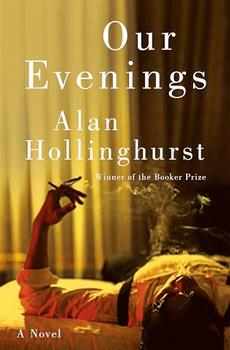Summary | Excerpt | Reviews | Beyond the Book | Readalikes | Genres & Themes | Author Bio

A Memoir
by Annie ProulxChapter 1
The Back Road
to Bird Cloud
March 2005
The cow-speckled landscape is an ashy grey color. I am driving
through flat pastureland on a rough county road that is mostly
dirt, the protective gravel long ago squirted into ditches by
speeding ranch trucks. Stiffened tire tracks veer off the road,
through mud and into the sagebrush, the marks of someone
with back pasture business. It is too early for grass and the
ranchers are still putting out hay, the occasional line of tumbled
green alfalfa the only color in a drab world. The cows are
strung out in a line determined by the rancher's course across
the field; their heads are down and they pull at the bright hay.
The blue-white road twists like an overturned snake showing
its belly. The ditches alongside are the same grey noncolor
as the dust that coats the sage and rabbitbrush, the banks sloping
crumbles of powdery soil that say "not far away from here
were once volcanoes." It is impossible not to think about those
old ash-spewing volcanoes when moving through Wyoming.
The sagebrush seems nearly black and beaten low by the ceaseless
wind. Why would anybody live here, I think. I live here.
But it is a different world down by the river at Bird Cloud. On
the north bank rears a four-hundred-foot cliff, the creamy caprock
a crust of ancient coral. This monolith has been tempered
by thousands of years of polishing wind, blowtorch sun, flood
and rattling hail, sluice of rain. After rain the cliff looks bruised,
dark splotches and vertical channels like old scars. Two miles
west the cliff shrinks into ziggurat stairs of dark, iron-colored
stone. At the east end of the property the cliff shows a fault, a
diagonal scar that a geologist friend says is likely related to the
Rio Grande Rift which is slowly tearing the North American
continent apart. In no place that I've ever lived have I thought
so often about the subterranean movements of continents. The
fault in the cliff is a reminder that the earth is in slow, constant
flux, inexorably shoving continental plates together, pulling
them apart, making new oceans and enormous supercontinents,
a vast new Pangaea Proxima predicted hundreds of millions
of years from now, long after our species has exited the
scene. The Rio Grande Rift deformation, which started 30 million
years ago in the Cenozoic, is a stretching and thinning of
the earth's crust by upward-bulging forces in the churning heat
of the mantle deep below. The rift extends from West Texas and
New Mexico to about twenty miles north of Bird Cloud, and
has made not only the Rio Grande River gorge near Taos but
some of the west's most beautiful valleys.1 In fact the rift seems
to be related to western basin and range topography. The diagonal
fault in Bird Cloud's cliff as well as the cliff 's entire sloping
shape and the existence of Jack Creek, a feeder stream, are all
likely influenced by this irresistible stretching force.
Another way I think about Bird Cloud's golden cliff is to
remember Uluru in Australia's red center. Thomas Keneally
wrote rhapsodically of the rock's "sublime sandstone conglomerate"
which evenly spalls its outer layers so that its profile
never changes although it becomes incrementally smaller as
the centuries pass.2 This massive megalith, not far from Alice
Springs, I saw in 1996 with artist Claire Van Vliet who was
sketching nearby Kata Tjuta - rock formations that resemble
huge stone turbans.
The resemblances of the Bird Cloud property to Uluru are
several, though perhaps a little far-fetched. The two sites are
roughly the same size and bulk and go through color shifts
according to time of day. Both seem to be fitted with interior
lights that create a glow after dark. Uluru has its pools
and twisting watercourses down the huge body of the rock;
the cliff has the river at its foot. Both Uluru and Kata Tjuta
are extremely important in matters spiritual and ceremonial
to Aboriginal tribes, especially the Pitjantjatjara and Yankuntjatjara
western desert tribes, but the story of how the Traditional Owners lost these places to the federal government is
familiar, sad and ugly. In the 1985 "agreement" between the
Anangu, the Aboriginal people of the area, and the government,
the Anangu were forced to lease Uluru and Kata Tjuta to
the National Park Service and to allow tourists to climb Uluru.
Despite the unenforceable rule on a Park Service sign stating
that the Traditional Owners regard climbing the rock as a desecration,
thousands insultingly climb it every year. In my part of
Wyoming, Bird Cloud's cliffs were once a much-used camping
place for western Indian tribes, the Ute, Arapaho, Shoshone,
maybe Sioux and Cheyenne. Nearby Elk Mountain was a place
marker indicating a mutually agreed on battleground area.
The geography around Uluru is laced with ancient hero trails
that have existed since the Dreamtime. It is a place of ritual
caves where certain important ceremonies of the world's most
ancient culture still take place, where there are sacred fertility
stones known to few living mortals and pools where legendary
events occurred. Following the infrequent rains, twisting
streams of water flow down the red flanks and into various
pools. At Uluru the general slope of the great rock is reversed
by a fold called Kandju, according to Keneally, "a benevolent
lizard who came to Ayers Rock to find his boomerang."3 And
Bird Cloud's yellow cliff tapers away at its east end and is balanced
by the distant rise of Pennock, a reverse image of slope.
Along Jack Creek the leafless willow stems burn red as
embers. Willow is cautious, one of the last shrubs to put out
its leaves - there is frost danger until mid-June. The cliff is
reflected in the onyx river, and swimming across it is the stout
beaver with a bank den on the far side. The beaver disappears
into the brilliant Salix stems.
Excerpted from Bird Cloud by Annie Proulx. Copyright © 2011 by Dead Line, Ltd. Excerpted with permission by Scribner, a division of Simon & Schuster, Inc.




Courage - a perfect sensibility of the measure of danger, and a mental willingness to endure it.
Click Here to find out who said this, as well as discovering other famous literary quotes!
Your guide toexceptional books
BookBrowse seeks out and recommends the best in contemporary fiction and nonfiction—books that not only engage and entertain but also deepen our understanding of ourselves and the world around us.